-
EXECUTIVE SUMMARY
-
Market Overview
-
Key Findings
-
Market Segmentation
-
Competitive Landscape
-
Challenges and Opportunities
-
Future Outlook
-
MARKET INTRODUCTION
-
Definition
-
Scope of the study
- Research Objective
- Assumption
- Limitations
-
RESEARCH METHODOLOGY
-
Overview
-
Data Mining
-
Secondary Research
-
Primary Research
- Primary Interviews and Information Gathering Process
- Breakdown of Primary Respondents
-
Forecasting Model
-
Market Size Estimation
- Bottom-Up Approach
- Top-Down Approach
-
Data Triangulation
-
Validation
-
MARKET DYNAMICS
-
Overview
-
Drivers
-
Restraints
-
Opportunities
-
MARKET FACTOR ANALYSIS
-
Value chain Analysis
-
Porter's Five Forces Analysis
- Bargaining Power of Suppliers
- Bargaining Power of Buyers
- Threat of New Entrants
- Threat of Substitutes
- Intensity of Rivalry
-
COVID-19 Impact Analysis
- Market Impact Analysis
- Regional Impact
- Opportunity and Threat Analysis
-
AIRPORT SNOW REMOVAL VEHICLES AND EQUIPMENT MARKET, BY EQUIPMENT TYPE (USD BILLION)
-
Snow Plows
-
Snow Blowers
-
De-icing Equipment
-
Groomers
-
AIRPORT SNOW REMOVAL VEHICLES AND EQUIPMENT MARKET, BY POWER SOURCE (USD BILLION)
-
Diesel
-
Electric
-
Hybrid
-
AIRPORT SNOW REMOVAL VEHICLES AND EQUIPMENT MARKET, BY USAGE TYPE (USD BILLION)
-
Dedicated Snow Removal Vehicles
-
Multi-Purpose Vehicles
-
Truck-Mounted Equipment
-
AIRPORT SNOW REMOVAL VEHICLES AND EQUIPMENT MARKET, BY END USE (USD BILLION)
-
Commercial Airports
-
Private Airports
-
Military Airports
-
AIRPORT SNOW REMOVAL VEHICLES AND EQUIPMENT MARKET, BY REGIONAL (USD BILLION)
-
North America
- US
- Canada
-
Europe
- Germany
- UK
- France
- Russia
- Italy
- Spain
- Rest of Europe
-
APAC
- China
- India
- Japan
- South Korea
- Malaysia
- Thailand
- Indonesia
- Rest of APAC
-
South America
- Brazil
- Mexico
- Argentina
- Rest of South America
-
MEA
- GCC Countries
- South Africa
- Rest of MEA
-
COMPETITIVE LANDSCAPE
-
Overview
-
Competitive Analysis
-
Market share Analysis
-
Major Growth Strategy in the Airport Snow Removal Vehicles and Equipment Market
-
Competitive Benchmarking
-
Leading Players in Terms of Number of Developments in the Airport Snow Removal Vehicles and Equipment Market
-
Key developments and growth strategies
- New Product Launch/Service Deployment
- Merger & Acquisitions
- Joint Ventures
-
Major Players Financial Matrix
- Sales and Operating Income
- Major Players R&D Expenditure. 2023
-
COMPANY PROFILES
-
Alamo Group
- Financial Overview
- Products Offered
- Key Developments
- SWOT Analysis
- Key Strategies
-
Scag Power Equipment
- Financial Overview
- Products Offered
- Key Developments
- SWOT Analysis
- Key Strategies
-
SnowEx
- Financial Overview
- Products Offered
- Key Developments
- SWOT Analysis
- Key Strategies
-
JCB
- Financial Overview
- Products Offered
- Key Developments
- SWOT Analysis
- Key Strategies
-
Case IH
- Financial Overview
- Products Offered
- Key Developments
- SWOT Analysis
- Key Strategies
-
John Deere
- Financial Overview
- Products Offered
- Key Developments
- SWOT Analysis
- Key Strategies
-
Textron
- Financial Overview
- Products Offered
- Key Developments
- SWOT Analysis
- Key Strategies
-
Bucher Municipal
- Financial Overview
- Products Offered
- Key Developments
- SWOT Analysis
- Key Strategies
-
Hustler Turf Equipment
- Financial Overview
- Products Offered
- Key Developments
- SWOT Analysis
- Key Strategies
-
Aebi Schmidt
- Financial Overview
- Products Offered
- Key Developments
- SWOT Analysis
- Key Strategies
-
Kuhn Group
- Financial Overview
- Products Offered
- Key Developments
- SWOT Analysis
- Key Strategies
-
Dartmouth
- Financial Overview
- Products Offered
- Key Developments
- SWOT Analysis
- Key Strategies
-
Wacker Neuson
- Financial Overview
- Products Offered
- Key Developments
- SWOT Analysis
- Key Strategies
-
Terry Equipment
- Financial Overview
- Products Offered
- Key Developments
- SWOT Analysis
- Key Strategies
-
Boschung
- Financial Overview
- Products Offered
- Key Developments
- SWOT Analysis
- Key Strategies
-
APPENDIX
-
References
-
Related Reports
-
LIST OF TABLES
-
LIST OF ASSUMPTIONS
-
NORTH AMERICA AIRPORT SNOW REMOVAL VEHICLES AND EQUIPMENT MARKET SIZE ESTIMATES & FORECAST, BY EQUIPMENT TYPE, 2019-2032 (USD BILLIONS)
-
NORTH AMERICA AIRPORT SNOW REMOVAL VEHICLES AND EQUIPMENT MARKET SIZE ESTIMATES & FORECAST, BY POWER SOURCE, 2019-2032 (USD BILLIONS)
-
NORTH AMERICA AIRPORT SNOW REMOVAL VEHICLES AND EQUIPMENT MARKET SIZE ESTIMATES & FORECAST, BY USAGE TYPE, 2019-2032 (USD BILLIONS)
-
NORTH AMERICA AIRPORT SNOW REMOVAL VEHICLES AND EQUIPMENT MARKET SIZE ESTIMATES & FORECAST, BY END USE, 2019-2032 (USD BILLIONS)
-
NORTH AMERICA AIRPORT SNOW REMOVAL VEHICLES AND EQUIPMENT MARKET SIZE ESTIMATES & FORECAST, BY REGIONAL, 2019-2032 (USD BILLIONS)
-
US AIRPORT SNOW REMOVAL VEHICLES AND EQUIPMENT MARKET SIZE ESTIMATES & FORECAST, BY EQUIPMENT TYPE, 2019-2032 (USD BILLIONS)
-
US AIRPORT SNOW REMOVAL VEHICLES AND EQUIPMENT MARKET SIZE ESTIMATES & FORECAST, BY POWER SOURCE, 2019-2032 (USD BILLIONS)
-
US AIRPORT SNOW REMOVAL VEHICLES AND EQUIPMENT MARKET SIZE ESTIMATES & FORECAST, BY USAGE TYPE, 2019-2032 (USD BILLIONS)
-
US AIRPORT SNOW REMOVAL VEHICLES AND EQUIPMENT MARKET SIZE ESTIMATES & FORECAST, BY END USE, 2019-2032 (USD BILLIONS)
-
US AIRPORT SNOW REMOVAL VEHICLES AND EQUIPMENT MARKET SIZE ESTIMATES & FORECAST, BY REGIONAL, 2019-2032 (USD BILLIONS)
-
CANADA AIRPORT SNOW REMOVAL VEHICLES AND EQUIPMENT MARKET SIZE ESTIMATES & FORECAST, BY EQUIPMENT TYPE, 2019-2032 (USD BILLIONS)
-
CANADA AIRPORT SNOW REMOVAL VEHICLES AND EQUIPMENT MARKET SIZE ESTIMATES & FORECAST, BY POWER SOURCE, 2019-2032 (USD BILLIONS)
-
CANADA AIRPORT SNOW REMOVAL VEHICLES AND EQUIPMENT MARKET SIZE ESTIMATES & FORECAST, BY USAGE TYPE, 2019-2032 (USD BILLIONS)
-
CANADA AIRPORT SNOW REMOVAL VEHICLES AND EQUIPMENT MARKET SIZE ESTIMATES & FORECAST, BY END USE, 2019-2032 (USD BILLIONS)
-
CANADA AIRPORT SNOW REMOVAL VEHICLES AND EQUIPMENT MARKET SIZE ESTIMATES & FORECAST, BY REGIONAL, 2019-2032 (USD BILLIONS)
-
EUROPE AIRPORT SNOW REMOVAL VEHICLES AND EQUIPMENT MARKET SIZE ESTIMATES & FORECAST, BY EQUIPMENT TYPE, 2019-2032 (USD BILLIONS)
-
EUROPE AIRPORT SNOW REMOVAL VEHICLES AND EQUIPMENT MARKET SIZE ESTIMATES & FORECAST, BY POWER SOURCE, 2019-2032 (USD BILLIONS)
-
EUROPE AIRPORT SNOW REMOVAL VEHICLES AND EQUIPMENT MARKET SIZE ESTIMATES & FORECAST, BY USAGE TYPE, 2019-2032 (USD BILLIONS)
-
EUROPE AIRPORT SNOW REMOVAL VEHICLES AND EQUIPMENT MARKET SIZE ESTIMATES & FORECAST, BY END USE, 2019-2032 (USD BILLIONS)
-
EUROPE AIRPORT SNOW REMOVAL VEHICLES AND EQUIPMENT MARKET SIZE ESTIMATES & FORECAST, BY REGIONAL, 2019-2032 (USD BILLIONS)
-
GERMANY AIRPORT SNOW REMOVAL VEHICLES AND EQUIPMENT MARKET SIZE ESTIMATES & FORECAST, BY EQUIPMENT TYPE, 2019-2032 (USD BILLIONS)
-
GERMANY AIRPORT SNOW REMOVAL VEHICLES AND EQUIPMENT MARKET SIZE ESTIMATES & FORECAST, BY POWER SOURCE, 2019-2032 (USD BILLIONS)
-
GERMANY AIRPORT SNOW REMOVAL VEHICLES AND EQUIPMENT MARKET SIZE ESTIMATES & FORECAST, BY USAGE TYPE, 2019-2032 (USD BILLIONS)
-
GERMANY AIRPORT SNOW REMOVAL VEHICLES AND EQUIPMENT MARKET SIZE ESTIMATES & FORECAST, BY END USE, 2019-2032 (USD BILLIONS)
-
GERMANY AIRPORT SNOW REMOVAL VEHICLES AND EQUIPMENT MARKET SIZE ESTIMATES & FORECAST, BY REGIONAL, 2019-2032 (USD BILLIONS)
-
UK AIRPORT SNOW REMOVAL VEHICLES AND EQUIPMENT MARKET SIZE ESTIMATES & FORECAST, BY EQUIPMENT TYPE, 2019-2032 (USD BILLIONS)
-
UK AIRPORT SNOW REMOVAL VEHICLES AND EQUIPMENT MARKET SIZE ESTIMATES & FORECAST, BY POWER SOURCE, 2019-2032 (USD BILLIONS)
-
UK AIRPORT SNOW REMOVAL VEHICLES AND EQUIPMENT MARKET SIZE ESTIMATES & FORECAST, BY USAGE TYPE, 2019-2032 (USD BILLIONS)
-
UK AIRPORT SNOW REMOVAL VEHICLES AND EQUIPMENT MARKET SIZE ESTIMATES & FORECAST, BY END USE, 2019-2032 (USD BILLIONS)
-
UK AIRPORT SNOW REMOVAL VEHICLES AND EQUIPMENT MARKET SIZE ESTIMATES & FORECAST, BY REGIONAL, 2019-2032 (USD BILLIONS)
-
FRANCE AIRPORT SNOW REMOVAL VEHICLES AND EQUIPMENT MARKET SIZE ESTIMATES & FORECAST, BY EQUIPMENT TYPE, 2019-2032 (USD BILLIONS)
-
FRANCE AIRPORT SNOW REMOVAL VEHICLES AND EQUIPMENT MARKET SIZE ESTIMATES & FORECAST, BY POWER SOURCE, 2019-2032 (USD BILLIONS)
-
FRANCE AIRPORT SNOW REMOVAL VEHICLES AND EQUIPMENT MARKET SIZE ESTIMATES & FORECAST, BY USAGE TYPE, 2019-2032 (USD BILLIONS)
-
FRANCE AIRPORT SNOW REMOVAL VEHICLES AND EQUIPMENT MARKET SIZE ESTIMATES & FORECAST, BY END USE, 2019-2032 (USD BILLIONS)
-
FRANCE AIRPORT SNOW REMOVAL VEHICLES AND EQUIPMENT MARKET SIZE ESTIMATES & FORECAST, BY REGIONAL, 2019-2032 (USD BILLIONS)
-
RUSSIA AIRPORT SNOW REMOVAL VEHICLES AND EQUIPMENT MARKET SIZE ESTIMATES & FORECAST, BY EQUIPMENT TYPE, 2019-2032 (USD BILLIONS)
-
RUSSIA AIRPORT SNOW REMOVAL VEHICLES AND EQUIPMENT MARKET SIZE ESTIMATES & FORECAST, BY POWER SOURCE, 2019-2032 (USD BILLIONS)
-
RUSSIA AIRPORT SNOW REMOVAL VEHICLES AND EQUIPMENT MARKET SIZE ESTIMATES & FORECAST, BY USAGE TYPE, 2019-2032 (USD BILLIONS)
-
RUSSIA AIRPORT SNOW REMOVAL VEHICLES AND EQUIPMENT MARKET SIZE ESTIMATES & FORECAST, BY END USE, 2019-2032 (USD BILLIONS)
-
RUSSIA AIRPORT SNOW REMOVAL VEHICLES AND EQUIPMENT MARKET SIZE ESTIMATES & FORECAST, BY REGIONAL, 2019-2032 (USD BILLIONS)
-
ITALY AIRPORT SNOW REMOVAL VEHICLES AND EQUIPMENT MARKET SIZE ESTIMATES & FORECAST, BY EQUIPMENT TYPE, 2019-2032 (USD BILLIONS)
-
ITALY AIRPORT SNOW REMOVAL VEHICLES AND EQUIPMENT MARKET SIZE ESTIMATES & FORECAST, BY POWER SOURCE, 2019-2032 (USD BILLIONS)
-
ITALY AIRPORT SNOW REMOVAL VEHICLES AND EQUIPMENT MARKET SIZE ESTIMATES & FORECAST, BY USAGE TYPE, 2019-2032 (USD BILLIONS)
-
ITALY AIRPORT SNOW REMOVAL VEHICLES AND EQUIPMENT MARKET SIZE ESTIMATES & FORECAST, BY END USE, 2019-2032 (USD BILLIONS)
-
ITALY AIRPORT SNOW REMOVAL VEHICLES AND EQUIPMENT MARKET SIZE ESTIMATES & FORECAST, BY REGIONAL, 2019-2032 (USD BILLIONS)
-
SPAIN AIRPORT SNOW REMOVAL VEHICLES AND EQUIPMENT MARKET SIZE ESTIMATES & FORECAST, BY EQUIPMENT TYPE, 2019-2032 (USD BILLIONS)
-
SPAIN AIRPORT SNOW REMOVAL VEHICLES AND EQUIPMENT MARKET SIZE ESTIMATES & FORECAST, BY POWER SOURCE, 2019-2032 (USD BILLIONS)
-
SPAIN AIRPORT SNOW REMOVAL VEHICLES AND EQUIPMENT MARKET SIZE ESTIMATES & FORECAST, BY USAGE TYPE, 2019-2032 (USD BILLIONS)
-
SPAIN AIRPORT SNOW REMOVAL VEHICLES AND EQUIPMENT MARKET SIZE ESTIMATES & FORECAST, BY END USE, 2019-2032 (USD BILLIONS)
-
SPAIN AIRPORT SNOW REMOVAL VEHICLES AND EQUIPMENT MARKET SIZE ESTIMATES & FORECAST, BY REGIONAL, 2019-2032 (USD BILLIONS)
-
REST OF EUROPE AIRPORT SNOW REMOVAL VEHICLES AND EQUIPMENT MARKET SIZE ESTIMATES & FORECAST, BY EQUIPMENT TYPE, 2019-2032 (USD BILLIONS)
-
REST OF EUROPE AIRPORT SNOW REMOVAL VEHICLES AND EQUIPMENT MARKET SIZE ESTIMATES & FORECAST, BY POWER SOURCE, 2019-2032 (USD BILLIONS)
-
REST OF EUROPE AIRPORT SNOW REMOVAL VEHICLES AND EQUIPMENT MARKET SIZE ESTIMATES & FORECAST, BY USAGE TYPE, 2019-2032 (USD BILLIONS)
-
REST OF EUROPE AIRPORT SNOW REMOVAL VEHICLES AND EQUIPMENT MARKET SIZE ESTIMATES & FORECAST, BY END USE, 2019-2032 (USD BILLIONS)
-
REST OF EUROPE AIRPORT SNOW REMOVAL VEHICLES AND EQUIPMENT MARKET SIZE ESTIMATES & FORECAST, BY REGIONAL, 2019-2032 (USD BILLIONS)
-
APAC AIRPORT SNOW REMOVAL VEHICLES AND EQUIPMENT MARKET SIZE ESTIMATES & FORECAST, BY EQUIPMENT TYPE, 2019-2032 (USD BILLIONS)
-
APAC AIRPORT SNOW REMOVAL VEHICLES AND EQUIPMENT MARKET SIZE ESTIMATES & FORECAST, BY POWER SOURCE, 2019-2032 (USD BILLIONS)
-
APAC AIRPORT SNOW REMOVAL VEHICLES AND EQUIPMENT MARKET SIZE ESTIMATES & FORECAST, BY USAGE TYPE, 2019-2032 (USD BILLIONS)
-
APAC AIRPORT SNOW REMOVAL VEHICLES AND EQUIPMENT MARKET SIZE ESTIMATES & FORECAST, BY END USE, 2019-2032 (USD BILLIONS)
-
APAC AIRPORT SNOW REMOVAL VEHICLES AND EQUIPMENT MARKET SIZE ESTIMATES & FORECAST, BY REGIONAL, 2019-2032 (USD BILLIONS)
-
CHINA AIRPORT SNOW REMOVAL VEHICLES AND EQUIPMENT MARKET SIZE ESTIMATES & FORECAST, BY EQUIPMENT TYPE, 2019-2032 (USD BILLIONS)
-
CHINA AIRPORT SNOW REMOVAL VEHICLES AND EQUIPMENT MARKET SIZE ESTIMATES & FORECAST, BY POWER SOURCE, 2019-2032 (USD BILLIONS)
-
CHINA AIRPORT SNOW REMOVAL VEHICLES AND EQUIPMENT MARKET SIZE ESTIMATES & FORECAST, BY USAGE TYPE, 2019-2032 (USD BILLIONS)
-
CHINA AIRPORT SNOW REMOVAL VEHICLES AND EQUIPMENT MARKET SIZE ESTIMATES & FORECAST, BY END USE, 2019-2032 (USD BILLIONS)
-
CHINA AIRPORT SNOW REMOVAL VEHICLES AND EQUIPMENT MARKET SIZE ESTIMATES & FORECAST, BY REGIONAL, 2019-2032 (USD BILLIONS)
-
INDIA AIRPORT SNOW REMOVAL VEHICLES AND EQUIPMENT MARKET SIZE ESTIMATES & FORECAST, BY EQUIPMENT TYPE, 2019-2032 (USD BILLIONS)
-
INDIA AIRPORT SNOW REMOVAL VEHICLES AND EQUIPMENT MARKET SIZE ESTIMATES & FORECAST, BY POWER SOURCE, 2019-2032 (USD BILLIONS)
-
INDIA AIRPORT SNOW REMOVAL VEHICLES AND EQUIPMENT MARKET SIZE ESTIMATES & FORECAST, BY USAGE TYPE, 2019-2032 (USD BILLIONS)
-
INDIA AIRPORT SNOW REMOVAL VEHICLES AND EQUIPMENT MARKET SIZE ESTIMATES & FORECAST, BY END USE, 2019-2032 (USD BILLIONS)
-
INDIA AIRPORT SNOW REMOVAL VEHICLES AND EQUIPMENT MARKET SIZE ESTIMATES & FORECAST, BY REGIONAL, 2019-2032 (USD BILLIONS)
-
JAPAN AIRPORT SNOW REMOVAL VEHICLES AND EQUIPMENT MARKET SIZE ESTIMATES & FORECAST, BY EQUIPMENT TYPE, 2019-2032 (USD BILLIONS)
-
JAPAN AIRPORT SNOW REMOVAL VEHICLES AND EQUIPMENT MARKET SIZE ESTIMATES & FORECAST, BY POWER SOURCE, 2019-2032 (USD BILLIONS)
-
JAPAN AIRPORT SNOW REMOVAL VEHICLES AND EQUIPMENT MARKET SIZE ESTIMATES & FORECAST, BY USAGE TYPE, 2019-2032 (USD BILLIONS)
-
JAPAN AIRPORT SNOW REMOVAL VEHICLES AND EQUIPMENT MARKET SIZE ESTIMATES & FORECAST, BY END USE, 2019-2032 (USD BILLIONS)
-
JAPAN AIRPORT SNOW REMOVAL VEHICLES AND EQUIPMENT MARKET SIZE ESTIMATES & FORECAST, BY REGIONAL, 2019-2032 (USD BILLIONS)
-
SOUTH KOREA AIRPORT SNOW REMOVAL VEHICLES AND EQUIPMENT MARKET SIZE ESTIMATES & FORECAST, BY EQUIPMENT TYPE, 2019-2032 (USD BILLIONS)
-
SOUTH KOREA AIRPORT SNOW REMOVAL VEHICLES AND EQUIPMENT MARKET SIZE ESTIMATES & FORECAST, BY POWER SOURCE, 2019-2032 (USD BILLIONS)
-
SOUTH KOREA AIRPORT SNOW REMOVAL VEHICLES AND EQUIPMENT MARKET SIZE ESTIMATES & FORECAST, BY USAGE TYPE, 2019-2032 (USD BILLIONS)
-
SOUTH KOREA AIRPORT SNOW REMOVAL VEHICLES AND EQUIPMENT MARKET SIZE ESTIMATES & FORECAST, BY END USE, 2019-2032 (USD BILLIONS)
-
SOUTH KOREA AIRPORT SNOW REMOVAL VEHICLES AND EQUIPMENT MARKET SIZE ESTIMATES & FORECAST, BY REGIONAL, 2019-2032 (USD BILLIONS)
-
MALAYSIA AIRPORT SNOW REMOVAL VEHICLES AND EQUIPMENT MARKET SIZE ESTIMATES & FORECAST, BY EQUIPMENT TYPE, 2019-2032 (USD BILLIONS)
-
MALAYSIA AIRPORT SNOW REMOVAL VEHICLES AND EQUIPMENT MARKET SIZE ESTIMATES & FORECAST, BY POWER SOURCE, 2019-2032 (USD BILLIONS)
-
MALAYSIA AIRPORT SNOW REMOVAL VEHICLES AND EQUIPMENT MARKET SIZE ESTIMATES & FORECAST, BY USAGE TYPE, 2019-2032 (USD BILLIONS)
-
MALAYSIA AIRPORT SNOW REMOVAL VEHICLES AND EQUIPMENT MARKET SIZE ESTIMATES & FORECAST, BY END USE, 2019-2032 (USD BILLIONS)
-
MALAYSIA AIRPORT SNOW REMOVAL VEHICLES AND EQUIPMENT MARKET SIZE ESTIMATES & FORECAST, BY REGIONAL, 2019-2032 (USD BILLIONS)
-
THAILAND AIRPORT SNOW REMOVAL VEHICLES AND EQUIPMENT MARKET SIZE ESTIMATES & FORECAST, BY EQUIPMENT TYPE, 2019-2032 (USD BILLIONS)
-
THAILAND AIRPORT SNOW REMOVAL VEHICLES AND EQUIPMENT MARKET SIZE ESTIMATES & FORECAST, BY POWER SOURCE, 2019-2032 (USD BILLIONS)
-
THAILAND AIRPORT SNOW REMOVAL VEHICLES AND EQUIPMENT MARKET SIZE ESTIMATES & FORECAST, BY USAGE TYPE, 2019-2032 (USD BILLIONS)
-
THAILAND AIRPORT SNOW REMOVAL VEHICLES AND EQUIPMENT MARKET SIZE ESTIMATES & FORECAST, BY END USE, 2019-2032 (USD BILLIONS)
-
THAILAND AIRPORT SNOW REMOVAL VEHICLES AND EQUIPMENT MARKET SIZE ESTIMATES & FORECAST, BY REGIONAL, 2019-2032 (USD BILLIONS)
-
INDONESIA AIRPORT SNOW REMOVAL VEHICLES AND EQUIPMENT MARKET SIZE ESTIMATES & FORECAST, BY EQUIPMENT TYPE, 2019-2032 (USD BILLIONS)
-
INDONESIA AIRPORT SNOW REMOVAL VEHICLES AND EQUIPMENT MARKET SIZE ESTIMATES & FORECAST, BY POWER SOURCE, 2019-2032 (USD BILLIONS)
-
INDONESIA AIRPORT SNOW REMOVAL VEHICLES AND EQUIPMENT MARKET SIZE ESTIMATES & FORECAST, BY USAGE TYPE, 2019-2032 (USD BILLIONS)
-
INDONESIA AIRPORT SNOW REMOVAL VEHICLES AND EQUIPMENT MARKET SIZE ESTIMATES & FORECAST, BY END USE, 2019-2032 (USD BILLIONS)
-
INDONESIA AIRPORT SNOW REMOVAL VEHICLES AND EQUIPMENT MARKET SIZE ESTIMATES & FORECAST, BY REGIONAL, 2019-2032 (USD BILLIONS)
-
REST OF APAC AIRPORT SNOW REMOVAL VEHICLES AND EQUIPMENT MARKET SIZE ESTIMATES & FORECAST, BY EQUIPMENT TYPE, 2019-2032 (USD BILLIONS)
-
REST OF APAC AIRPORT SNOW REMOVAL VEHICLES AND EQUIPMENT MARKET SIZE ESTIMATES & FORECAST, BY POWER SOURCE, 2019-2032 (USD BILLIONS)
-
REST OF APAC AIRPORT SNOW REMOVAL VEHICLES AND EQUIPMENT MARKET SIZE ESTIMATES & FORECAST, BY USAGE TYPE, 2019-2032 (USD BILLIONS)
-
REST OF APAC AIRPORT SNOW REMOVAL VEHICLES AND EQUIPMENT MARKET SIZE ESTIMATES & FORECAST, BY END USE, 2019-2032 (USD BILLIONS)
-
REST OF APAC AIRPORT SNOW REMOVAL VEHICLES AND EQUIPMENT MARKET SIZE ESTIMATES & FORECAST, BY REGIONAL, 2019-2032 (USD BILLIONS)
-
SOUTH AMERICA AIRPORT SNOW REMOVAL VEHICLES AND EQUIPMENT MARKET SIZE ESTIMATES & FORECAST, BY EQUIPMENT TYPE, 2019-2032 (USD BILLIONS)
-
SOUTH AMERICA AIRPORT SNOW REMOVAL VEHICLES AND EQUIPMENT MARKET SIZE ESTIMATES & FORECAST, BY POWER SOURCE, 2019-2032 (USD BILLIONS)
-
SOUTH AMERICA AIRPORT SNOW REMOVAL VEHICLES AND EQUIPMENT MARKET SIZE ESTIMATES & FORECAST, BY USAGE TYPE, 2019-2032 (USD BILLIONS)
-
SOUTH AMERICA AIRPORT SNOW REMOVAL VEHICLES AND EQUIPMENT MARKET SIZE ESTIMATES & FORECAST, BY END USE, 2019-2032 (USD BILLIONS)
-
SOUTH AMERICA AIRPORT SNOW REMOVAL VEHICLES AND EQUIPMENT MARKET SIZE ESTIMATES & FORECAST, BY REGIONAL, 2019-2032 (USD BILLIONS)
-
BRAZIL AIRPORT SNOW REMOVAL VEHICLES AND EQUIPMENT MARKET SIZE ESTIMATES & FORECAST, BY EQUIPMENT TYPE, 2019-2032 (USD BILLIONS)
-
BRAZIL AIRPORT SNOW REMOVAL VEHICLES AND EQUIPMENT MARKET SIZE ESTIMATES & FORECAST, BY POWER SOURCE, 2019-2032 (USD BILLIONS)
-
BRAZIL AIRPORT SNOW REMOVAL VEHICLES AND EQUIPMENT MARKET SIZE ESTIMATES & FORECAST, BY USAGE TYPE, 2019-2032 (USD BILLIONS)
-
BRAZIL AIRPORT SNOW REMOVAL VEHICLES AND EQUIPMENT MARKET SIZE ESTIMATES & FORECAST, BY END USE, 2019-2032 (USD BILLIONS)
-
BRAZIL AIRPORT SNOW REMOVAL VEHICLES AND EQUIPMENT MARKET SIZE ESTIMATES & FORECAST, BY REGIONAL, 2019-2032 (USD BILLIONS)
-
MEXICO AIRPORT SNOW REMOVAL VEHICLES AND EQUIPMENT MARKET SIZE ESTIMATES & FORECAST, BY EQUIPMENT TYPE, 2019-2032 (USD BILLIONS)
-
MEXICO AIRPORT SNOW REMOVAL VEHICLES AND EQUIPMENT MARKET SIZE ESTIMATES & FORECAST, BY POWER SOURCE, 2019-2032 (USD BILLIONS)
-
MEXICO AIRPORT SNOW REMOVAL VEHICLES AND EQUIPMENT MARKET SIZE ESTIMATES & FORECAST, BY USAGE TYPE, 2019-2032 (USD BILLIONS)
-
MEXICO AIRPORT SNOW REMOVAL VEHICLES AND EQUIPMENT MARKET SIZE ESTIMATES & FORECAST, BY END USE, 2019-2032 (USD BILLIONS)
-
MEXICO AIRPORT SNOW REMOVAL VEHICLES AND EQUIPMENT MARKET SIZE ESTIMATES & FORECAST, BY REGIONAL, 2019-2032 (USD BILLIONS)
-
ARGENTINA AIRPORT SNOW REMOVAL VEHICLES AND EQUIPMENT MARKET SIZE ESTIMATES & FORECAST, BY EQUIPMENT TYPE, 2019-2032 (USD BILLIONS)
-
ARGENTINA AIRPORT SNOW REMOVAL VEHICLES AND EQUIPMENT MARKET SIZE ESTIMATES & FORECAST, BY POWER SOURCE, 2019-2032 (USD BILLIONS)
-
ARGENTINA AIRPORT SNOW REMOVAL VEHICLES AND EQUIPMENT MARKET SIZE ESTIMATES & FORECAST, BY USAGE TYPE, 2019-2032 (USD BILLIONS)
-
ARGENTINA AIRPORT SNOW REMOVAL VEHICLES AND EQUIPMENT MARKET SIZE ESTIMATES & FORECAST, BY END USE, 2019-2032 (USD BILLIONS)
-
ARGENTINA AIRPORT SNOW REMOVAL VEHICLES AND EQUIPMENT MARKET SIZE ESTIMATES & FORECAST, BY REGIONAL, 2019-2032 (USD BILLIONS)
-
REST OF SOUTH AMERICA AIRPORT SNOW REMOVAL VEHICLES AND EQUIPMENT MARKET SIZE ESTIMATES & FORECAST, BY EQUIPMENT TYPE, 2019-2032 (USD BILLIONS)
-
REST OF SOUTH AMERICA AIRPORT SNOW REMOVAL VEHICLES AND EQUIPMENT MARKET SIZE ESTIMATES & FORECAST, BY POWER SOURCE, 2019-2032 (USD BILLIONS)
-
REST OF SOUTH AMERICA AIRPORT SNOW REMOVAL VEHICLES AND EQUIPMENT MARKET SIZE ESTIMATES & FORECAST, BY USAGE TYPE, 2019-2032 (USD BILLIONS)
-
REST OF SOUTH AMERICA AIRPORT SNOW REMOVAL VEHICLES AND EQUIPMENT MARKET SIZE ESTIMATES & FORECAST, BY END USE, 2019-2032 (USD BILLIONS)
-
REST OF SOUTH AMERICA AIRPORT SNOW REMOVAL VEHICLES AND EQUIPMENT MARKET SIZE ESTIMATES & FORECAST, BY REGIONAL, 2019-2032 (USD BILLIONS)
-
MEA AIRPORT SNOW REMOVAL VEHICLES AND EQUIPMENT MARKET SIZE ESTIMATES & FORECAST, BY EQUIPMENT TYPE, 2019-2032 (USD BILLIONS)
-
MEA AIRPORT SNOW REMOVAL VEHICLES AND EQUIPMENT MARKET SIZE ESTIMATES & FORECAST, BY POWER SOURCE, 2019-2032 (USD BILLIONS)
-
MEA AIRPORT SNOW REMOVAL VEHICLES AND EQUIPMENT MARKET SIZE ESTIMATES & FORECAST, BY USAGE TYPE, 2019-2032 (USD BILLIONS)
-
MEA AIRPORT SNOW REMOVAL VEHICLES AND EQUIPMENT MARKET SIZE ESTIMATES & FORECAST, BY END USE, 2019-2032 (USD BILLIONS)
-
MEA AIRPORT SNOW REMOVAL VEHICLES AND EQUIPMENT MARKET SIZE ESTIMATES & FORECAST, BY REGIONAL, 2019-2032 (USD BILLIONS)
-
GCC COUNTRIES AIRPORT SNOW REMOVAL VEHICLES AND EQUIPMENT MARKET SIZE ESTIMATES & FORECAST, BY EQUIPMENT TYPE, 2019-2032 (USD BILLIONS)
-
GCC COUNTRIES AIRPORT SNOW REMOVAL VEHICLES AND EQUIPMENT MARKET SIZE ESTIMATES & FORECAST, BY POWER SOURCE, 2019-2032 (USD BILLIONS)
-
GCC COUNTRIES AIRPORT SNOW REMOVAL VEHICLES AND EQUIPMENT MARKET SIZE ESTIMATES & FORECAST, BY USAGE TYPE, 2019-2032 (USD BILLIONS)
-
GCC COUNTRIES AIRPORT SNOW REMOVAL VEHICLES AND EQUIPMENT MARKET SIZE ESTIMATES & FORECAST, BY END USE, 2019-2032 (USD BILLIONS)
-
GCC COUNTRIES AIRPORT SNOW REMOVAL VEHICLES AND EQUIPMENT MARKET SIZE ESTIMATES & FORECAST, BY REGIONAL, 2019-2032 (USD BILLIONS)
-
SOUTH AFRICA AIRPORT SNOW REMOVAL VEHICLES AND EQUIPMENT MARKET SIZE ESTIMATES & FORECAST, BY EQUIPMENT TYPE, 2019-2032 (USD BILLIONS)
-
SOUTH AFRICA AIRPORT SNOW REMOVAL VEHICLES AND EQUIPMENT MARKET SIZE ESTIMATES & FORECAST, BY POWER SOURCE, 2019-2032 (USD BILLIONS)
-
SOUTH AFRICA AIRPORT SNOW REMOVAL VEHICLES AND EQUIPMENT MARKET SIZE ESTIMATES & FORECAST, BY USAGE TYPE, 2019-2032 (USD BILLIONS)
-
SOUTH AFRICA AIRPORT SNOW REMOVAL VEHICLES AND EQUIPMENT MARKET SIZE ESTIMATES & FORECAST, BY END USE, 2019-2032 (USD BILLIONS)
-
SOUTH AFRICA AIRPORT SNOW REMOVAL VEHICLES AND EQUIPMENT MARKET SIZE ESTIMATES & FORECAST, BY REGIONAL, 2019-2032 (USD BILLIONS)
-
REST OF MEA AIRPORT SNOW REMOVAL VEHICLES AND EQUIPMENT MARKET SIZE ESTIMATES & FORECAST, BY EQUIPMENT TYPE, 2019-2032 (USD BILLIONS)
-
REST OF MEA AIRPORT SNOW REMOVAL VEHICLES AND EQUIPMENT MARKET SIZE ESTIMATES & FORECAST, BY POWER SOURCE, 2019-2032 (USD BILLIONS)
-
REST OF MEA AIRPORT SNOW REMOVAL VEHICLES AND EQUIPMENT MARKET SIZE ESTIMATES & FORECAST, BY USAGE TYPE, 2019-2032 (USD BILLIONS)
-
REST OF MEA AIRPORT SNOW REMOVAL VEHICLES AND EQUIPMENT MARKET SIZE ESTIMATES & FORECAST, BY END USE, 2019-2032 (USD BILLIONS)
-
REST OF MEA AIRPORT SNOW REMOVAL VEHICLES AND EQUIPMENT MARKET SIZE ESTIMATES & FORECAST, BY REGIONAL, 2019-2032 (USD BILLIONS)
-
PRODUCT LAUNCH/PRODUCT DEVELOPMENT/APPROVAL
-
ACQUISITION/PARTNERSHIP
-
LIST OF FIGURES
-
MARKET SYNOPSIS
-
NORTH AMERICA AIRPORT SNOW REMOVAL VEHICLES AND EQUIPMENT MARKET ANALYSIS
-
US AIRPORT SNOW REMOVAL VEHICLES AND EQUIPMENT MARKET ANALYSIS BY EQUIPMENT TYPE
-
US AIRPORT SNOW REMOVAL VEHICLES AND EQUIPMENT MARKET ANALYSIS BY POWER SOURCE
-
US AIRPORT SNOW REMOVAL VEHICLES AND EQUIPMENT MARKET ANALYSIS BY USAGE TYPE
-
US AIRPORT SNOW REMOVAL VEHICLES AND EQUIPMENT MARKET ANALYSIS BY END USE
-
US AIRPORT SNOW REMOVAL VEHICLES AND EQUIPMENT MARKET ANALYSIS BY REGIONAL
-
CANADA AIRPORT SNOW REMOVAL VEHICLES AND EQUIPMENT MARKET ANALYSIS BY EQUIPMENT TYPE
-
CANADA AIRPORT SNOW REMOVAL VEHICLES AND EQUIPMENT MARKET ANALYSIS BY POWER SOURCE
-
CANADA AIRPORT SNOW REMOVAL VEHICLES AND EQUIPMENT MARKET ANALYSIS BY USAGE TYPE
-
CANADA AIRPORT SNOW REMOVAL VEHICLES AND EQUIPMENT MARKET ANALYSIS BY END USE
-
CANADA AIRPORT SNOW REMOVAL VEHICLES AND EQUIPMENT MARKET ANALYSIS BY REGIONAL
-
EUROPE AIRPORT SNOW REMOVAL VEHICLES AND EQUIPMENT MARKET ANALYSIS
-
GERMANY AIRPORT SNOW REMOVAL VEHICLES AND EQUIPMENT MARKET ANALYSIS BY EQUIPMENT TYPE
-
GERMANY AIRPORT SNOW REMOVAL VEHICLES AND EQUIPMENT MARKET ANALYSIS BY POWER SOURCE
-
GERMANY AIRPORT SNOW REMOVAL VEHICLES AND EQUIPMENT MARKET ANALYSIS BY USAGE TYPE
-
GERMANY AIRPORT SNOW REMOVAL VEHICLES AND EQUIPMENT MARKET ANALYSIS BY END USE
-
GERMANY AIRPORT SNOW REMOVAL VEHICLES AND EQUIPMENT MARKET ANALYSIS BY REGIONAL
-
UK AIRPORT SNOW REMOVAL VEHICLES AND EQUIPMENT MARKET ANALYSIS BY EQUIPMENT TYPE
-
UK AIRPORT SNOW REMOVAL VEHICLES AND EQUIPMENT MARKET ANALYSIS BY POWER SOURCE
-
UK AIRPORT SNOW REMOVAL VEHICLES AND EQUIPMENT MARKET ANALYSIS BY USAGE TYPE
-
UK AIRPORT SNOW REMOVAL VEHICLES AND EQUIPMENT MARKET ANALYSIS BY END USE
-
UK AIRPORT SNOW REMOVAL VEHICLES AND EQUIPMENT MARKET ANALYSIS BY REGIONAL
-
FRANCE AIRPORT SNOW REMOVAL VEHICLES AND EQUIPMENT MARKET ANALYSIS BY EQUIPMENT TYPE
-
FRANCE AIRPORT SNOW REMOVAL VEHICLES AND EQUIPMENT MARKET ANALYSIS BY POWER SOURCE
-
FRANCE AIRPORT SNOW REMOVAL VEHICLES AND EQUIPMENT MARKET ANALYSIS BY USAGE TYPE
-
FRANCE AIRPORT SNOW REMOVAL VEHICLES AND EQUIPMENT MARKET ANALYSIS BY END USE
-
FRANCE AIRPORT SNOW REMOVAL VEHICLES AND EQUIPMENT MARKET ANALYSIS BY REGIONAL
-
RUSSIA AIRPORT SNOW REMOVAL VEHICLES AND EQUIPMENT MARKET ANALYSIS BY EQUIPMENT TYPE
-
RUSSIA AIRPORT SNOW REMOVAL VEHICLES AND EQUIPMENT MARKET ANALYSIS BY POWER SOURCE
-
RUSSIA AIRPORT SNOW REMOVAL VEHICLES AND EQUIPMENT MARKET ANALYSIS BY USAGE TYPE
-
RUSSIA AIRPORT SNOW REMOVAL VEHICLES AND EQUIPMENT MARKET ANALYSIS BY END USE
-
RUSSIA AIRPORT SNOW REMOVAL VEHICLES AND EQUIPMENT MARKET ANALYSIS BY REGIONAL
-
ITALY AIRPORT SNOW REMOVAL VEHICLES AND EQUIPMENT MARKET ANALYSIS BY EQUIPMENT TYPE
-
ITALY AIRPORT SNOW REMOVAL VEHICLES AND EQUIPMENT MARKET ANALYSIS BY POWER SOURCE
-
ITALY AIRPORT SNOW REMOVAL VEHICLES AND EQUIPMENT MARKET ANALYSIS BY USAGE TYPE
-
ITALY AIRPORT SNOW REMOVAL VEHICLES AND EQUIPMENT MARKET ANALYSIS BY END USE
-
ITALY AIRPORT SNOW REMOVAL VEHICLES AND EQUIPMENT MARKET ANALYSIS BY REGIONAL
-
SPAIN AIRPORT SNOW REMOVAL VEHICLES AND EQUIPMENT MARKET ANALYSIS BY EQUIPMENT TYPE
-
SPAIN AIRPORT SNOW REMOVAL VEHICLES AND EQUIPMENT MARKET ANALYSIS BY POWER SOURCE
-
SPAIN AIRPORT SNOW REMOVAL VEHICLES AND EQUIPMENT MARKET ANALYSIS BY USAGE TYPE
-
SPAIN AIRPORT SNOW REMOVAL VEHICLES AND EQUIPMENT MARKET ANALYSIS BY END USE
-
SPAIN AIRPORT SNOW REMOVAL VEHICLES AND EQUIPMENT MARKET ANALYSIS BY REGIONAL
-
REST OF EUROPE AIRPORT SNOW REMOVAL VEHICLES AND EQUIPMENT MARKET ANALYSIS BY EQUIPMENT TYPE
-
REST OF EUROPE AIRPORT SNOW REMOVAL VEHICLES AND EQUIPMENT MARKET ANALYSIS BY POWER SOURCE
-
REST OF EUROPE AIRPORT SNOW REMOVAL VEHICLES AND EQUIPMENT MARKET ANALYSIS BY USAGE TYPE
-
REST OF EUROPE AIRPORT SNOW REMOVAL VEHICLES AND EQUIPMENT MARKET ANALYSIS BY END USE
-
REST OF EUROPE AIRPORT SNOW REMOVAL VEHICLES AND EQUIPMENT MARKET ANALYSIS BY REGIONAL
-
APAC AIRPORT SNOW REMOVAL VEHICLES AND EQUIPMENT MARKET ANALYSIS
-
CHINA AIRPORT SNOW REMOVAL VEHICLES AND EQUIPMENT MARKET ANALYSIS BY EQUIPMENT TYPE
-
CHINA AIRPORT SNOW REMOVAL VEHICLES AND EQUIPMENT MARKET ANALYSIS BY POWER SOURCE
-
CHINA AIRPORT SNOW REMOVAL VEHICLES AND EQUIPMENT MARKET ANALYSIS BY USAGE TYPE
-
CHINA AIRPORT SNOW REMOVAL VEHICLES AND EQUIPMENT MARKET ANALYSIS BY END USE
-
CHINA AIRPORT SNOW REMOVAL VEHICLES AND EQUIPMENT MARKET ANALYSIS BY REGIONAL
-
INDIA AIRPORT SNOW REMOVAL VEHICLES AND EQUIPMENT MARKET ANALYSIS BY EQUIPMENT TYPE
-
INDIA AIRPORT SNOW REMOVAL VEHICLES AND EQUIPMENT MARKET ANALYSIS BY POWER SOURCE
-
INDIA AIRPORT SNOW REMOVAL VEHICLES AND EQUIPMENT MARKET ANALYSIS BY USAGE TYPE
-
INDIA AIRPORT SNOW REMOVAL VEHICLES AND EQUIPMENT MARKET ANALYSIS BY END USE
-
INDIA AIRPORT SNOW REMOVAL VEHICLES AND EQUIPMENT MARKET ANALYSIS BY REGIONAL
-
JAPAN AIRPORT SNOW REMOVAL VEHICLES AND EQUIPMENT MARKET ANALYSIS BY EQUIPMENT TYPE
-
JAPAN AIRPORT SNOW REMOVAL VEHICLES AND EQUIPMENT MARKET ANALYSIS BY POWER SOURCE
-
JAPAN AIRPORT SNOW REMOVAL VEHICLES AND EQUIPMENT MARKET ANALYSIS BY USAGE TYPE
-
JAPAN AIRPORT SNOW REMOVAL VEHICLES AND EQUIPMENT MARKET ANALYSIS BY END USE
-
JAPAN AIRPORT SNOW REMOVAL VEHICLES AND EQUIPMENT MARKET ANALYSIS BY REGIONAL
-
SOUTH KOREA AIRPORT SNOW REMOVAL VEHICLES AND EQUIPMENT MARKET ANALYSIS BY EQUIPMENT TYPE
-
SOUTH KOREA AIRPORT SNOW REMOVAL VEHICLES AND EQUIPMENT MARKET ANALYSIS BY POWER SOURCE
-
SOUTH KOREA AIRPORT SNOW REMOVAL VEHICLES AND EQUIPMENT MARKET ANALYSIS BY USAGE TYPE
-
SOUTH KOREA AIRPORT SNOW REMOVAL VEHICLES AND EQUIPMENT MARKET ANALYSIS BY END USE
-
SOUTH KOREA AIRPORT SNOW REMOVAL VEHICLES AND EQUIPMENT MARKET ANALYSIS BY REGIONAL
-
MALAYSIA AIRPORT SNOW REMOVAL VEHICLES AND EQUIPMENT MARKET ANALYSIS BY EQUIPMENT TYPE
-
MALAYSIA AIRPORT SNOW REMOVAL VEHICLES AND EQUIPMENT MARKET ANALYSIS BY POWER SOURCE
-
MALAYSIA AIRPORT SNOW REMOVAL VEHICLES AND EQUIPMENT MARKET ANALYSIS BY USAGE TYPE
-
MALAYSIA AIRPORT SNOW REMOVAL VEHICLES AND EQUIPMENT MARKET ANALYSIS BY END USE
-
MALAYSIA AIRPORT SNOW REMOVAL VEHICLES AND EQUIPMENT MARKET ANALYSIS BY REGIONAL
-
THAILAND AIRPORT SNOW REMOVAL VEHICLES AND EQUIPMENT MARKET ANALYSIS BY EQUIPMENT TYPE
-
THAILAND AIRPORT SNOW REMOVAL VEHICLES AND EQUIPMENT MARKET ANALYSIS BY POWER SOURCE
-
THAILAND AIRPORT SNOW REMOVAL VEHICLES AND EQUIPMENT MARKET ANALYSIS BY USAGE TYPE
-
THAILAND AIRPORT SNOW REMOVAL VEHICLES AND EQUIPMENT MARKET ANALYSIS BY END USE
-
THAILAND AIRPORT SNOW REMOVAL VEHICLES AND EQUIPMENT MARKET ANALYSIS BY REGIONAL
-
INDONESIA AIRPORT SNOW REMOVAL VEHICLES AND EQUIPMENT MARKET ANALYSIS BY EQUIPMENT TYPE
-
INDONESIA AIRPORT SNOW REMOVAL VEHICLES AND EQUIPMENT MARKET ANALYSIS BY POWER SOURCE
-
INDONESIA AIRPORT SNOW REMOVAL VEHICLES AND EQUIPMENT MARKET ANALYSIS BY USAGE TYPE
-
INDONESIA AIRPORT SNOW REMOVAL VEHICLES AND EQUIPMENT MARKET ANALYSIS BY END USE
-
INDONESIA AIRPORT SNOW REMOVAL VEHICLES AND EQUIPMENT MARKET ANALYSIS BY REGIONAL
-
REST OF APAC AIRPORT SNOW REMOVAL VEHICLES AND EQUIPMENT MARKET ANALYSIS BY EQUIPMENT TYPE
-
REST OF APAC AIRPORT SNOW REMOVAL VEHICLES AND EQUIPMENT MARKET ANALYSIS BY POWER SOURCE
-
REST OF APAC AIRPORT SNOW REMOVAL VEHICLES AND EQUIPMENT MARKET ANALYSIS BY USAGE TYPE
-
REST OF APAC AIRPORT SNOW REMOVAL VEHICLES AND EQUIPMENT MARKET ANALYSIS BY END USE
-
REST OF APAC AIRPORT SNOW REMOVAL VEHICLES AND EQUIPMENT MARKET ANALYSIS BY REGIONAL
-
SOUTH AMERICA AIRPORT SNOW REMOVAL VEHICLES AND EQUIPMENT MARKET ANALYSIS
-
BRAZIL AIRPORT SNOW REMOVAL VEHICLES AND EQUIPMENT MARKET ANALYSIS BY EQUIPMENT TYPE
-
BRAZIL AIRPORT SNOW REMOVAL VEHICLES AND EQUIPMENT MARKET ANALYSIS BY POWER SOURCE
-
BRAZIL AIRPORT SNOW REMOVAL VEHICLES AND EQUIPMENT MARKET ANALYSIS BY USAGE TYPE
-
BRAZIL AIRPORT SNOW REMOVAL VEHICLES AND EQUIPMENT MARKET ANALYSIS BY END USE
-
BRAZIL AIRPORT SNOW REMOVAL VEHICLES AND EQUIPMENT MARKET ANALYSIS BY REGIONAL
-
MEXICO AIRPORT SNOW REMOVAL VEHICLES AND EQUIPMENT MARKET ANALYSIS BY EQUIPMENT TYPE
-
MEXICO AIRPORT SNOW REMOVAL VEHICLES AND EQUIPMENT MARKET ANALYSIS BY POWER SOURCE
-
MEXICO AIRPORT SNOW REMOVAL VEHICLES AND EQUIPMENT MARKET ANALYSIS BY USAGE TYPE
-
MEXICO AIRPORT SNOW REMOVAL VEHICLES AND EQUIPMENT MARKET ANALYSIS BY END USE
-
MEXICO AIRPORT SNOW REMOVAL VEHICLES AND EQUIPMENT MARKET ANALYSIS BY REGIONAL
-
ARGENTINA AIRPORT SNOW REMOVAL VEHICLES AND EQUIPMENT MARKET ANALYSIS BY EQUIPMENT TYPE
-
ARGENTINA AIRPORT SNOW REMOVAL VEHICLES AND EQUIPMENT MARKET ANALYSIS BY POWER SOURCE
-
ARGENTINA AIRPORT SNOW REMOVAL VEHICLES AND EQUIPMENT MARKET ANALYSIS BY USAGE TYPE
-
ARGENTINA AIRPORT SNOW REMOVAL VEHICLES AND EQUIPMENT MARKET ANALYSIS BY END USE
-
ARGENTINA AIRPORT SNOW REMOVAL VEHICLES AND EQUIPMENT MARKET ANALYSIS BY REGIONAL
-
REST OF SOUTH AMERICA AIRPORT SNOW REMOVAL VEHICLES AND EQUIPMENT MARKET ANALYSIS BY EQUIPMENT TYPE
-
REST OF SOUTH AMERICA AIRPORT SNOW REMOVAL VEHICLES AND EQUIPMENT MARKET ANALYSIS BY POWER SOURCE
-
REST OF SOUTH AMERICA AIRPORT SNOW REMOVAL VEHICLES AND EQUIPMENT MARKET ANALYSIS BY USAGE TYPE
-
REST OF SOUTH AMERICA AIRPORT SNOW REMOVAL VEHICLES AND EQUIPMENT MARKET ANALYSIS BY END USE
-
REST OF SOUTH AMERICA AIRPORT SNOW REMOVAL VEHICLES AND EQUIPMENT MARKET ANALYSIS BY REGIONAL
-
MEA AIRPORT SNOW REMOVAL VEHICLES AND EQUIPMENT MARKET ANALYSIS
-
GCC COUNTRIES AIRPORT SNOW REMOVAL VEHICLES AND EQUIPMENT MARKET ANALYSIS BY EQUIPMENT TYPE
-
GCC COUNTRIES AIRPORT SNOW REMOVAL VEHICLES AND EQUIPMENT MARKET ANALYSIS BY POWER SOURCE
-
GCC COUNTRIES AIRPORT SNOW REMOVAL VEHICLES AND EQUIPMENT MARKET ANALYSIS BY USAGE TYPE
-
GCC COUNTRIES AIRPORT SNOW REMOVAL VEHICLES AND EQUIPMENT MARKET ANALYSIS BY END USE
-
GCC COUNTRIES AIRPORT SNOW REMOVAL VEHICLES AND EQUIPMENT MARKET ANALYSIS BY REGIONAL
-
SOUTH AFRICA AIRPORT SNOW REMOVAL VEHICLES AND EQUIPMENT MARKET ANALYSIS BY EQUIPMENT TYPE
-
SOUTH AFRICA AIRPORT SNOW REMOVAL VEHICLES AND EQUIPMENT MARKET ANALYSIS BY POWER SOURCE
-
SOUTH AFRICA AIRPORT SNOW REMOVAL VEHICLES AND EQUIPMENT MARKET ANALYSIS BY USAGE TYPE
-
SOUTH AFRICA AIRPORT SNOW REMOVAL VEHICLES AND EQUIPMENT MARKET ANALYSIS BY END USE
-
SOUTH AFRICA AIRPORT SNOW REMOVAL VEHICLES AND EQUIPMENT MARKET ANALYSIS BY REGIONAL
-
REST OF MEA AIRPORT SNOW REMOVAL VEHICLES AND EQUIPMENT MARKET ANALYSIS BY EQUIPMENT TYPE
-
REST OF MEA AIRPORT SNOW REMOVAL VEHICLES AND EQUIPMENT MARKET ANALYSIS BY POWER SOURCE
-
REST OF MEA AIRPORT SNOW REMOVAL VEHICLES AND EQUIPMENT MARKET ANALYSIS BY USAGE TYPE
-
REST OF MEA AIRPORT SNOW REMOVAL VEHICLES AND EQUIPMENT MARKET ANALYSIS BY END USE
-
REST OF MEA AIRPORT SNOW REMOVAL VEHICLES AND EQUIPMENT MARKET ANALYSIS BY REGIONAL
-
KEY BUYING CRITERIA OF AIRPORT SNOW REMOVAL VEHICLES AND EQUIPMENT MARKET
-
RESEARCH PROCESS OF MRFR
-
DRO ANALYSIS OF AIRPORT SNOW REMOVAL VEHICLES AND EQUIPMENT MARKET
-
DRIVERS IMPACT ANALYSIS: AIRPORT SNOW REMOVAL VEHICLES AND EQUIPMENT MARKET
-
RESTRAINTS IMPACT ANALYSIS: AIRPORT SNOW REMOVAL VEHICLES AND EQUIPMENT MARKET
-
SUPPLY / VALUE CHAIN: AIRPORT SNOW REMOVAL VEHICLES AND EQUIPMENT MARKET
-
AIRPORT SNOW REMOVAL VEHICLES AND EQUIPMENT MARKET, BY EQUIPMENT TYPE, 2024 (% SHARE)
-
AIRPORT SNOW REMOVAL VEHICLES AND EQUIPMENT MARKET, BY EQUIPMENT TYPE, 2019 TO 2032 (USD Billions)
-
AIRPORT SNOW REMOVAL VEHICLES AND EQUIPMENT MARKET, BY POWER SOURCE, 2024 (% SHARE)
-
AIRPORT SNOW REMOVAL VEHICLES AND EQUIPMENT MARKET, BY POWER SOURCE, 2019 TO 2032 (USD Billions)
-
AIRPORT SNOW REMOVAL VEHICLES AND EQUIPMENT MARKET, BY USAGE TYPE, 2024 (% SHARE)
-
AIRPORT SNOW REMOVAL VEHICLES AND EQUIPMENT MARKET, BY USAGE TYPE, 2019 TO 2032 (USD Billions)
-
AIRPORT SNOW REMOVAL VEHICLES AND EQUIPMENT MARKET, BY END USE, 2024 (% SHARE)
-
AIRPORT SNOW REMOVAL VEHICLES AND EQUIPMENT MARKET, BY END USE, 2019 TO 2032 (USD Billions)
-
AIRPORT SNOW REMOVAL VEHICLES AND EQUIPMENT MARKET, BY REGIONAL, 2024 (% SHARE)
-
AIRPORT SNOW REMOVAL VEHICLES AND EQUIPMENT MARKET, BY REGIONAL, 2019 TO 2032 (USD Billions)
-
BENCHMARKING OF MAJOR COMPETITORS

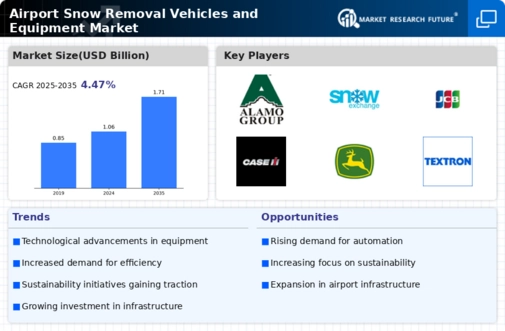
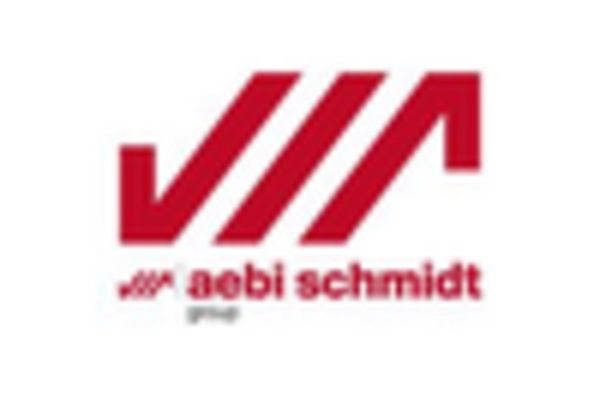

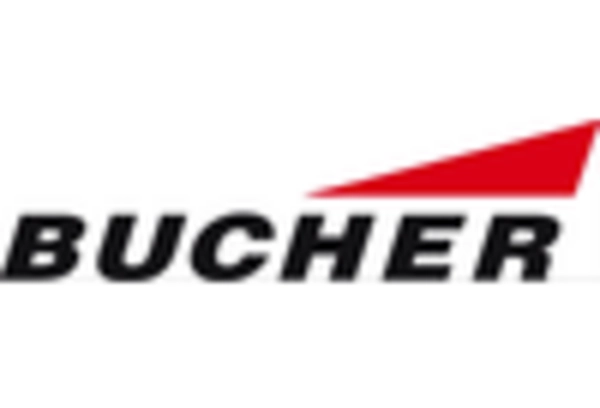
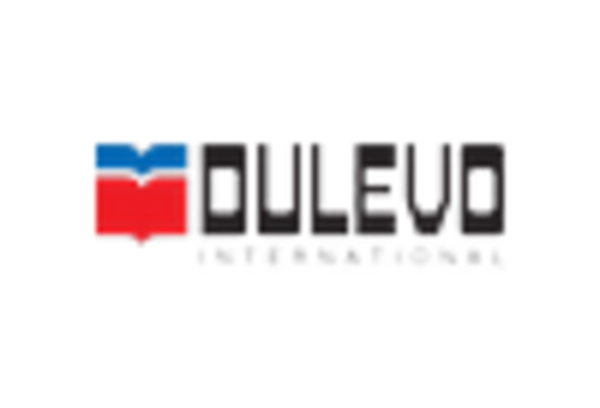

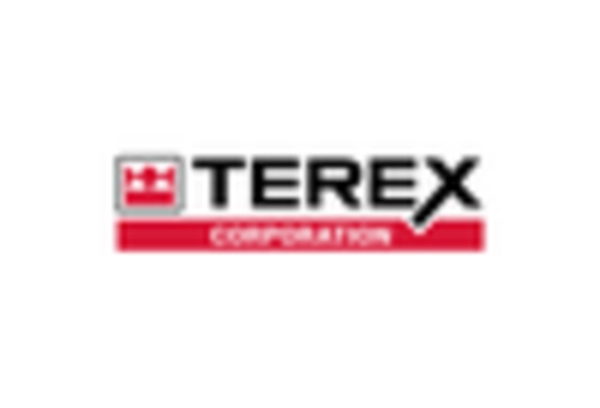









Leave a Comment